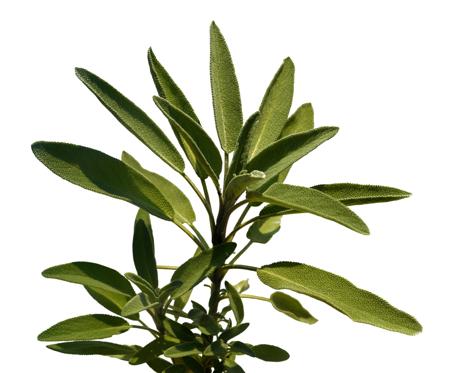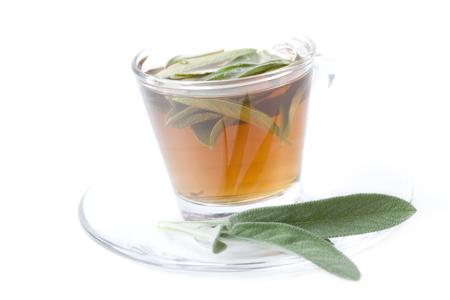





 Did You Know?Hawk moths, wasps, and bumblebees are the insects that pollinate white sage.Salvia apiana, commonly known as white sage, sacred sage, or bee sage is native to Northwestern Mexico, Southwestern United States. Its Latin name 'Salvia' is introduced from the word 'Salvare' which in Latin means, 'to save'. The name itself points out its healing properties. It is found mostly in sage scrub habitat of Baja California, Southern California, also on the Western borders of Sonoran and Mojave deserts.
Did You Know?Hawk moths, wasps, and bumblebees are the insects that pollinate white sage.Salvia apiana, commonly known as white sage, sacred sage, or bee sage is native to Northwestern Mexico, Southwestern United States. Its Latin name 'Salvia' is introduced from the word 'Salvare' which in Latin means, 'to save'. The name itself points out its healing properties. It is found mostly in sage scrub habitat of Baja California, Southern California, also on the Western borders of Sonoran and Mojave deserts. SageIt is an evergreen perennial shrub which belongs to the family Lamiaceae and is 4.3 to 4.9 feet tall and 4.3 feet wide. Leaves are normally 2.5 inches long and 1 inch wide with an oblong shape. Bottom portion of the leaves are whitish and upper side of the leaves are wrinkled. This shrub has beautiful flowers, attractive to many bees. Color of the flowers range from white to pale lavender.White sage needs well-drained dry soil, little water, and full sun to thrive on. It prefers to grow in sunny regions with good air circulation. It can be easily recognized in areas that provide ample sunlight such as fields and meadows. It easily interbreeds with different species of Salvia, such as Salvia leucophylla and Salvia clevelandii. In local Native American languages, White sage is also referred as, qaashil (Luiseño), shlhtaay or pilhtaay (Kumeyaay), kasiile(Tongva), we'wey (Chumash), qas'ily (Cahuilla), shaltai (Paipai), and lhtaay (Cochimí).Traditionally, it was used to get rid of negative energy but modern researchers claim that white sage is also used for medicinal and ceremonial purposes. Let's take a closer look at uses of white sage.What Is White Sage Used For? Native Americans in California placed white sage seeds in their eyes at night before sleeping. White sage seeds were known to collect impurities and dust from their eyes. White sage root tea was immediately consumed after giving birth. It was used to speed up the healing process and to encourage the expulsion of afterbirth. Leaves of white sage can be used as a hair cleanser and to suppress the development of gray hair. It is also used as hair dye by crushing and keeping them in water. Sage contains flavoring agents, that's why people still use white sage in dishes made of cheese, tomatoes, eggs, and beans due to its spicy and peppery taste. It can be consumed either raw or cooked. One way to eat them raw is to peel the ripe stems top or you can even eat the young stalks without cooking them. Raw or slightly cooked white sage seeds can be used as a spice or ground into powder. This powder can be mixed with oats or wheat cereal. Native Americans collected and dried the seeds of white sage and crushed them to meal. They used this meal to make batter for cake and porridge. White sage seeds can be soaked in water overnight, and added to fruit juice the following day.
SageIt is an evergreen perennial shrub which belongs to the family Lamiaceae and is 4.3 to 4.9 feet tall and 4.3 feet wide. Leaves are normally 2.5 inches long and 1 inch wide with an oblong shape. Bottom portion of the leaves are whitish and upper side of the leaves are wrinkled. This shrub has beautiful flowers, attractive to many bees. Color of the flowers range from white to pale lavender.White sage needs well-drained dry soil, little water, and full sun to thrive on. It prefers to grow in sunny regions with good air circulation. It can be easily recognized in areas that provide ample sunlight such as fields and meadows. It easily interbreeds with different species of Salvia, such as Salvia leucophylla and Salvia clevelandii. In local Native American languages, White sage is also referred as, qaashil (Luiseño), shlhtaay or pilhtaay (Kumeyaay), kasiile(Tongva), we'wey (Chumash), qas'ily (Cahuilla), shaltai (Paipai), and lhtaay (Cochimí).Traditionally, it was used to get rid of negative energy but modern researchers claim that white sage is also used for medicinal and ceremonial purposes. Let's take a closer look at uses of white sage.What Is White Sage Used For? Native Americans in California placed white sage seeds in their eyes at night before sleeping. White sage seeds were known to collect impurities and dust from their eyes. White sage root tea was immediately consumed after giving birth. It was used to speed up the healing process and to encourage the expulsion of afterbirth. Leaves of white sage can be used as a hair cleanser and to suppress the development of gray hair. It is also used as hair dye by crushing and keeping them in water. Sage contains flavoring agents, that's why people still use white sage in dishes made of cheese, tomatoes, eggs, and beans due to its spicy and peppery taste. It can be consumed either raw or cooked. One way to eat them raw is to peel the ripe stems top or you can even eat the young stalks without cooking them. Raw or slightly cooked white sage seeds can be used as a spice or ground into powder. This powder can be mixed with oats or wheat cereal. Native Americans collected and dried the seeds of white sage and crushed them to meal. They used this meal to make batter for cake and porridge. White sage seeds can be soaked in water overnight, and added to fruit juice the following day. Sage Tea White sage tea is beneficial in treating variety of diseases and ailments such as excessive sweating, bad breath, menopausal and menstrual problems, skin disorders, poor digestion, and sore gums. It is helpful for drying up breast milk. White sage tea is prepared by mixing one cup of water with 1 tsp. of dried sage leaves or 2 tsp. of fresh sage leaves, and kept on low heat for ten minutes. White sage herb tea decreases mucous secretions of lungs, sinus, and throat. You can use this tea for a nice and relaxing bath to soothe your tensed nerves. Many bug repellent creams use white sage as an active ingredient. Green bug juice can also be applied on skin as a toner, it also makes your skin soft. One of the most important usage of white sage is to ward off negative energies, spirits from home, office, any particular area in your house, attics, and people. The procedure is known as smudging, it is done by lighting the white sage with a match stick or a candle and allowing the smoke to cover each and every corner of the house or infested area. The smoke absorbs the negative energy and leaving your house or person spiritually cleansed. Many Native Americans viewed white sage as a ceremonial plant, they kept the plant in locations like altars and sweat lodges, facing the flowering side of the plant towards the fire. White sage incense is used to treat evil spirits, sickness and mental health. It was also utilized to clean inanimate objects like weapons, rooms, and utensils. White sage leaves can be used as natural straightener. It is also used to cover gray hair and reveal natural highlights in dark hair. You can make your own shampoo by mixing 3 drops of sage oil, 2 drops of thyme oil, 2 drops of rosemary oil with 1 oz. of regular shampoo. Apply the mixture to your hair, let it sit for about 3 minutes, then rinse it off. Tonics and liquids made from white sage can help in decreasing hair loss and promoting hair growth. It is known to treat alopecia. It can be used in fresh form by extracting its juice directly from the leaves or can be consumed as tea, mouthwash, and capsules. To stimulate appetite, consume it with dandelion or artichoke. Traditional Chinese doctors used it to increase body heat, mental and physical strength. On the other hand, ancient Romans treated sore throats, snakebites, hot flushes, and bleeding wounds with white sage. Additionally it was used to preserve meat for longer period of time in ancient Greece and Rome. Dried flowers can be used as decorations or in flower arrangements. Due to its strong fragrance, it is used to intensify potpourri. Since it has anti-bacterial properties, it is often used to make deodorants.Since it is a perennial plant, its life can be more than 2 years in the wild. Although it has variety of uses, you should always consult your doctor before consuming white sage tea.
Sage Tea White sage tea is beneficial in treating variety of diseases and ailments such as excessive sweating, bad breath, menopausal and menstrual problems, skin disorders, poor digestion, and sore gums. It is helpful for drying up breast milk. White sage tea is prepared by mixing one cup of water with 1 tsp. of dried sage leaves or 2 tsp. of fresh sage leaves, and kept on low heat for ten minutes. White sage herb tea decreases mucous secretions of lungs, sinus, and throat. You can use this tea for a nice and relaxing bath to soothe your tensed nerves. Many bug repellent creams use white sage as an active ingredient. Green bug juice can also be applied on skin as a toner, it also makes your skin soft. One of the most important usage of white sage is to ward off negative energies, spirits from home, office, any particular area in your house, attics, and people. The procedure is known as smudging, it is done by lighting the white sage with a match stick or a candle and allowing the smoke to cover each and every corner of the house or infested area. The smoke absorbs the negative energy and leaving your house or person spiritually cleansed. Many Native Americans viewed white sage as a ceremonial plant, they kept the plant in locations like altars and sweat lodges, facing the flowering side of the plant towards the fire. White sage incense is used to treat evil spirits, sickness and mental health. It was also utilized to clean inanimate objects like weapons, rooms, and utensils. White sage leaves can be used as natural straightener. It is also used to cover gray hair and reveal natural highlights in dark hair. You can make your own shampoo by mixing 3 drops of sage oil, 2 drops of thyme oil, 2 drops of rosemary oil with 1 oz. of regular shampoo. Apply the mixture to your hair, let it sit for about 3 minutes, then rinse it off. Tonics and liquids made from white sage can help in decreasing hair loss and promoting hair growth. It is known to treat alopecia. It can be used in fresh form by extracting its juice directly from the leaves or can be consumed as tea, mouthwash, and capsules. To stimulate appetite, consume it with dandelion or artichoke. Traditional Chinese doctors used it to increase body heat, mental and physical strength. On the other hand, ancient Romans treated sore throats, snakebites, hot flushes, and bleeding wounds with white sage. Additionally it was used to preserve meat for longer period of time in ancient Greece and Rome. Dried flowers can be used as decorations or in flower arrangements. Due to its strong fragrance, it is used to intensify potpourri. Since it has anti-bacterial properties, it is often used to make deodorants.Since it is a perennial plant, its life can be more than 2 years in the wild. Although it has variety of uses, you should always consult your doctor before consuming white sage tea.
Copyright © www.100flowers.win Botanic Garden All Rights Reserved